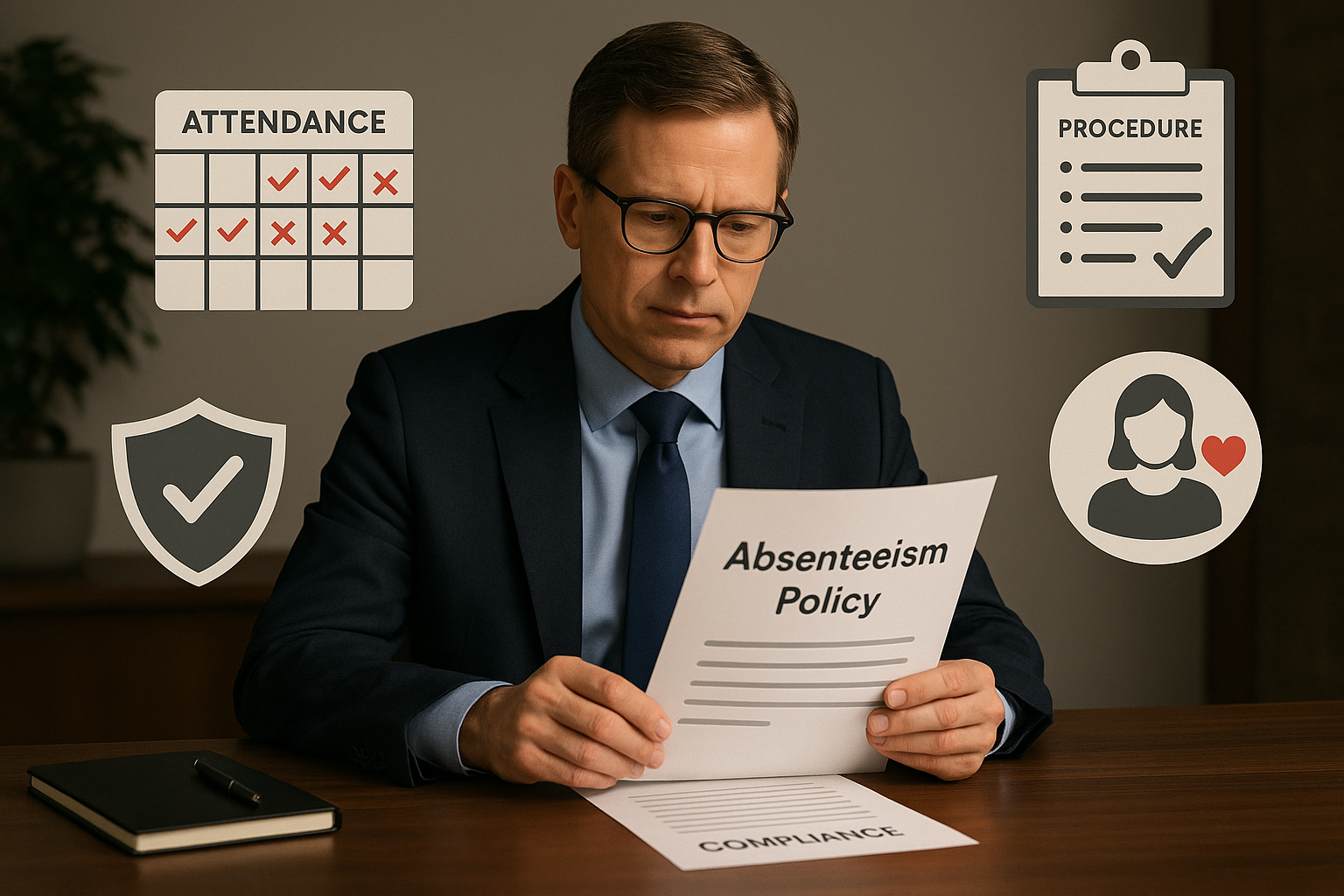
Crafting an Effective Absenteeism Policy: Key Components, Legal Requirements, and Best Practices
Employee absenteeism presents both operational and cultural challenges for organizations. Unplanned or excessive absences can disrupt workflows, impact customer service, decrease team morale, and increase costs due to decreased productivity and the need for temporary coverage. A clear, well-enforced absenteeism policy not only mitigates these risks but also promotes transparency, consistency, and accountability. This comprehensive guide explores how to build and maintain an effective absenteeism policy, ensuring legal compliance, fair enforcement, and employee support, all with the help of GalleryHR’s technology.
Key Components of a Modern Absenteeism Policy
An effective absenteeism policy goes beyond disciplinary measures—it sets the foundation for a culture of responsibility, respect, and communication. Key components include:
1. Clear Definition of Absenteeism
Define what constitutes an absence, including unplanned sick days, planned leave, tardiness, and no-shows. Categorize types of absences: paid time off (PTO), family leave, disability-related leave, and unexcused absence.
2. Reporting Procedures
Outline the required steps employees must take to notify their managers of an absence. This includes timing (e.g., at least one hour before shift), method (email, phone, HR system), and who to notify.
3. Attendance Monitoring and Documentation
Detail how attendance will be recorded (e.g., biometric clock-ins, digital time-tracking software), who is responsible for monitoring, and how data will be reviewed.
4. Disciplinary Guidelines for Excessive Absenteeism
Clarify how repeated or prolonged absences will be addressed. Define thresholds (e.g., three unexcused absences in a month), and outline a progressive discipline model (verbal warning, written notice, suspension, termination).
5. Support for Chronic or Legitimate Absenteeism
Include processes for employees with ongoing medical conditions, caregiving responsibilities, or protected leave. Describe accommodations, documentation required (e.g., doctor’s notes), and steps for return-to-work reintegration.
Legal and Regulatory Compliance
HR leaders must ensure that their absenteeism policies adhere to applicable labor laws. Failure to do so can lead to legal disputes, fines, and reputational harm.
-
Family and Medical Leave Act (FMLA): Entitles eligible employees to up to 12 weeks of unpaid, job-protected leave for qualifying reasons.
-
Americans with Disabilities Act (ADA): Requires reasonable accommodations for employees with disabilities, which may include flexible attendance expectations.
-
Fair Labor Standards Act (FLSA): Regulates overtime, hours worked, and pay—requiring accurate attendance records.
-
State and Local Laws: Additional protections may apply depending on location, especially in relation to paid sick leave or COVID-related leave policies.
Legal compliance means maintaining documentation, applying policies equitably, and clearly communicating employee rights.
Best Practices for Policy Implementation
1. Consistent Enforcement Across All Levels
Apply rules consistently across departments and leadership levels. Avoid selective enforcement that could result in claims of bias.
2. Transparent Communication
Provide employees with a copy of the policy at onboarding. Revisit it regularly through refresher training, all-hands meetings, and in your employee handbook.
3. Flexibility When Justified
Offer temporary flexibility (e.g., remote work, staggered shifts) to prevent burnout or accommodate short-term health issues.
4. Link Absenteeism to Engagement and Wellness
Use absenteeism trends as a signal for deeper organizational health issues. Are absences linked to stress, low morale, or a toxic culture?
5. Regular Reviews of the Policy
Review your absenteeism policy annually or after major organizational changes. Involve HR, legal, and department heads in refining processes.
Effective Enforcement Strategies
Monitoring and Intervention:
-
Leverage attendance software to detect patterns (e.g., frequent Monday/Friday absences).
-
Flag early warning signs and proactively engage employees.
Structured Escalation:
-
Start with a private coaching conversation
-
Follow with formal warnings in writing
-
Introduce performance improvement plans if necessary
Documentation is Key:
-
Keep thorough, time-stamped records of every absence and related communication.
-
Maintain compliance-ready audit trails.
GalleryHR Solutions: Managing Absenteeism with Technology
GalleryHR equips HR teams with robust tools to handle absenteeism systematically:
-
Automated Attendance Tracking: Real-time tracking dashboards and trend analysis to detect patterns and reduce manual reporting errors.
-
Policy Awareness and Acknowledgment Logs: Ensure employees have reviewed and accepted attendance policies.
-
Manager Alerts: Automated alerts for unexplained absences or threshold breaches.
-
Performance and Attendance Correlation: Identify how absenteeism impacts individual and team performance.
-
Integrated Wellness Tools: Prevent absenteeism by promoting well-being, mental health resources, and early support.
Conclusion
A robust absenteeism policy ensures your workplace remains productive, legally compliant, and supportive of employee well-being. By combining transparency with compassion and using technology to enforce fairly, HR teams can prevent absenteeism from becoming a chronic business issue.
GalleryHR empowers organizations to implement modern absenteeism strategies, so your people feel supported, your data stays reliable, and your productivity stays strong.

Don’t miss this opportunity to upgrade your HR operations and join the growing list of businesses in Sri Lanka achieving success with GalleryHR.
GalleryHR is committed to helping Sri Lankan businesses thrive with smarter, more efficient HR solutions. Partner with us today and experience the difference.
Join our empire today!




































0 تعليقات